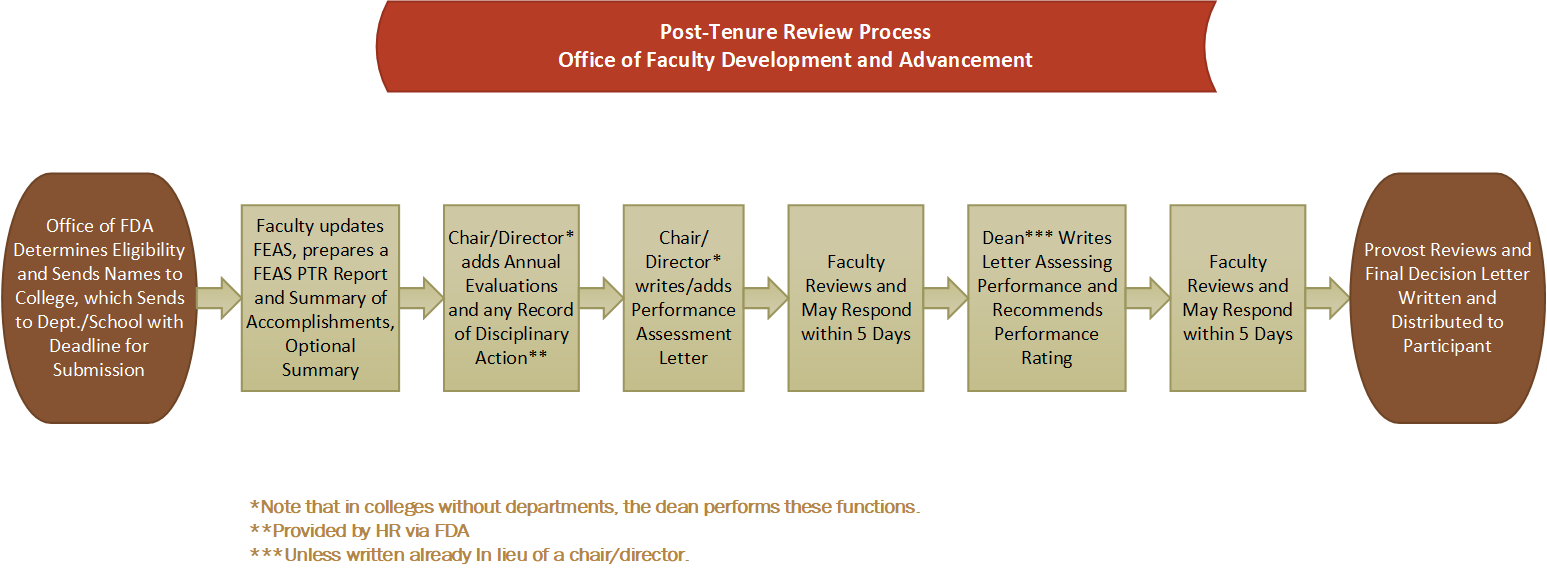Academic Leadership Toolkit
Post-Tenure Review
Overview:
Goals:
- To comply with Board of Governors Regulation 10.003 by establishing a process to review all tenured faculty every five (5) years post-tenure.
- To ensure continued high standards of quality and productivity among the University’s tenured faculty.
- To determine whether each tenured faculty member is fulfilling the responsibilities and meeting the expectations associated with their duties in research, teaching, and service.
- To recognize, honor, and reward exceptional achievement of tenured faculty.
- When appropriate, to refocus academic and professional efforts and take appropriate employment action.
Authority and Responsibility:
- The Florida Legislature amended Section 1001.706(6)(b), Florida Statutes, requiring that each university in the State University System establish procedures for post-tenure review of each tenured faculty member.
- The Florida Board of Governors established Regulation 10.003, setting out the requirements for fulfilling the mandate established by the Florida Statute and requiring that each SUS institution establish a Regulation implementing a post-tenure review process.
- Florida State University established FSU Regulation 4.073.
- The Provost (in consultation with the President) assigns the final performance rating for each candidate and sends a letter to each PTR participant.
- The Office of Faculty Development and Advancement coordinates the process university-wide, including selecting and confirming participants annually, communicating via annual workshops for participating faculty, website instructions and other resources, and troubleshooting problems.
Common Pitfalls and Misconceptions:
- Post-tenure faculty members should update their FEAS CV regularly, avoiding a last-minute rush if they are notified that they will participate in Post-Tenure Review during a given academic year.
- PTR reviews should encompass all materials submitted by the faculty member and the department chair/school director; they should not be limited to the annual evaluations during the review period.
- If faculty committees are used to provide advice at any level, they should focus only on assessing the candidate’s performance of their AOR. They should not be provided access to any existing evidence of faculty discipline.
- Faculty should only include work from the 5-year review period in their optional summary. The FEAS+ PTR report is set up to pull data from only the 5-year review period and should not be edited to include additional work.
Resources:


